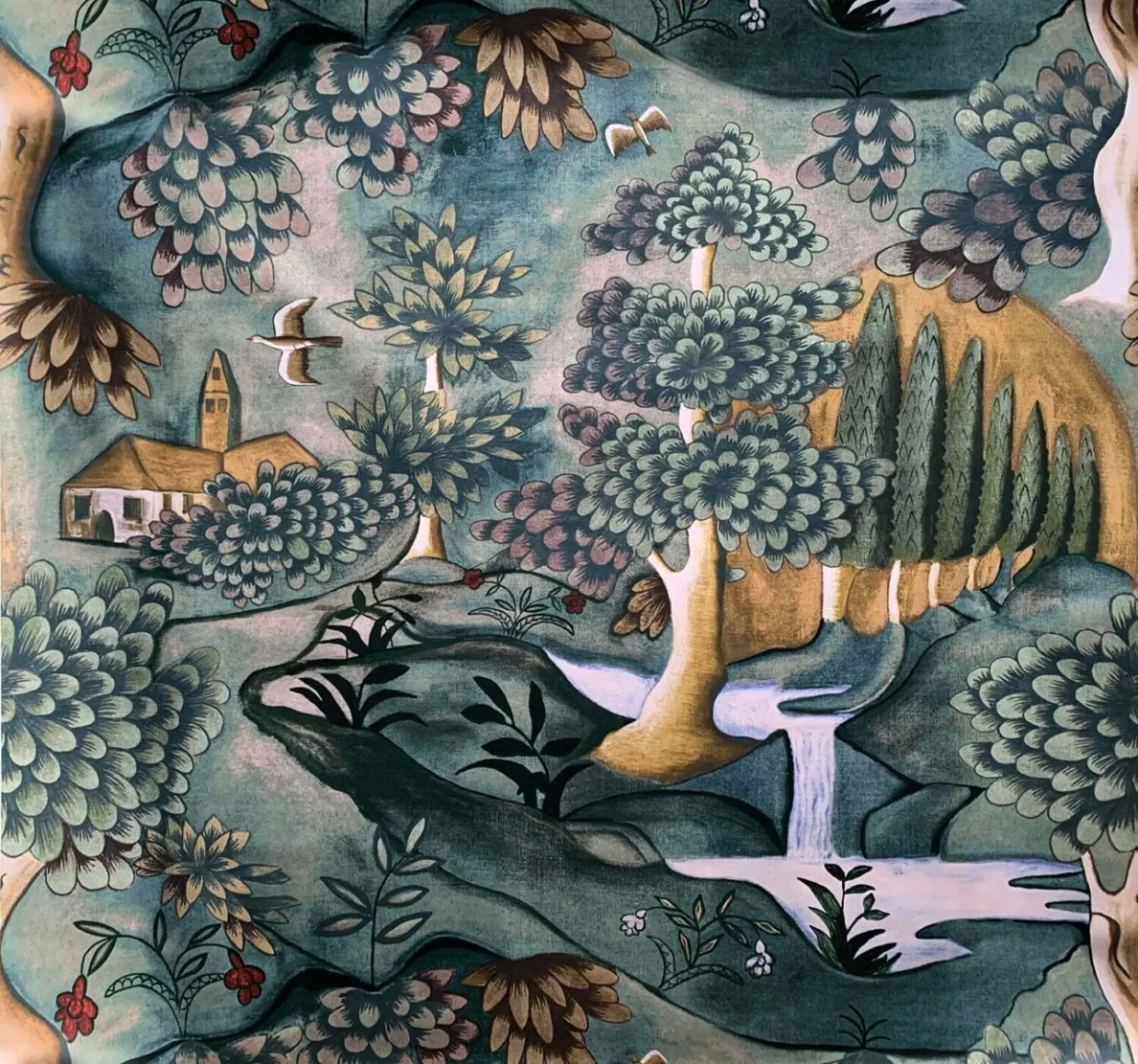
Michael Mapes: The Artist Behind Baudelaire
Great art often begins as fragments: ideas, objects, impressions, and memories that, when assembled, form something greater than the sum of its parts. Michael Mapes’ Charles Baudelaire commission at The Fifth Avenue Hotel is one such work. Undoubtedly mysterious, romantic, and immersive, the piece has become a guest favorite and one that captures the spirit of the French poet who coined the very word flâneur.
Kentucky-born artist Michael Mapes is known for his intricate, specimen-like portraits assembled from what he calls “biographical DNA,” such as photographs, documents, and found objects gathered through meticulous research. Each work is composed of hundreds, sometimes thousands, of these fragments, arranged into a singular, cohesive whole. Something like a portrait rendered in a mosaic of lived experiences.
Over the course of his career, Mapes’ art has been exhibited internationally, from the Museum of Arts and Design in New York and the Victoria and Albert Museum in London to the National Museum of Modern Art in Tokyo. He is now based in Mexico City, where he continues to expand his practice on both intimate and large-scale commissions.
The commission for Charles Baudelaire at The Fifth captures how Michael Mapes gathers fragments from the world and reimagines them into an extraordinary whole.
Walking the Streets of Paris
Before starting his Baudelaire piece, Mapes went to Paris for five weeks. In fact, it was part of the assignment.
“It’s easy to be a flâneur there,” he says. He wandered through the city with no agenda other than to gather inspiration and materials, like paperback books, posters, ink nibs, cigarette butts, botanical elements, and fabric. He photographed the hotel where Baudelaire had stayed (Hôtel de Lauzun), and the streets and monuments the poet would have walked past.
“All the while,” Mapes says, “I was visualizing how I might approach the composition.” The process was about more than research. Each step through the city brought him closer to Baudelaire’s world, allowing those impressions to seep into the work itself.
Muse and Method
For Mapes, every project begins with a muse. “I always make a connection to muses for motivation and inspiration,” he says. “Beyond his own writing, I found value in what others had written about Baudelaire. It fed my passion for the commission.”
His method is part instinct, part preparation. “I create hundreds of pieces before I start a composition,” Mapes explains. “I supplement during the process by adding things I think would be relevant. It’s like a painter with a thousand brushstrokes, working more intuitively and quicker after twenty years of experience.”
The Baudelaire piece also pushed his work in a different direction. “It felt more like something that was connected to what I thought was a spiritual leverage, something more poetic and less pictorial.”
A Life of Collecting
Mapes’ fascination with gathering and categorizing began with a friend. “Despite my butterfly collection at age seven, my appreciation for collections truly began when I befriended an entomologist in grad school,” he says. “He took me to the insect collection at the University of Illinois. It was remarkable.”
The meticulous rows of pinned specimens, the handwritten labels, the patterns and repetition, all of it stayed with him. Years later, those memories resurfaced in the studio. “I had a box of sewing pins, a hole punch, and a 5×8 photo I’d taken of a friend from Paris,” he recalls. “I hole‑punched parts of the photo and pinned the circles back to recreate the original image. That’s when I saw the bigger idea for my work.”
That moment became the foundation for a career built on assembling fragments into new forms.
A Portrait of a Poet, a City, and a Spirit
For Mapes, Charles Baudelaire at The Fifth is a layered narrative. “What I hoped to express in the work,” he says, “is a reference to the spirit of the streets of Paris, and Baudelaire’s connection to them. A kind of map, meets landscape, infused with Baudelaire.”
For anyone who stumbles on this piece at The Fifth, wonder builds with each glance. The fragments that make up the whole are a reminder of how artists transform the ordinary into the unforgettable simply by seeing the world with new eyes.

